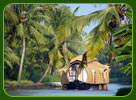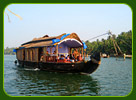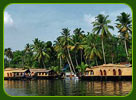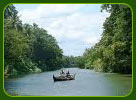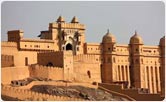Gujarat is a flourishing state with cultural diversity. This vibrant
state forms an integral part of the Indian culture. The Gujarati culture
is the blend of traditions, beliefs, customs, arts, values and
modernization. Despite of being among the most industrialized state
India, Gujarat preserves its rich culture and tradition of the ancient
past.
Another popular festival is Makkar Sankrati also known as Uttarayan in Gujarat. On 14th January when Sun enters the Tropic of Cancer, Makkar Sankrati festival is observed. The International Kite Festival is celebrated on this day. This is one of the most colorful events in Gujarat when whole sky is filled with the colorful kites all around.
Modhera Dance Festival -
Modhera is the sun temple at Modhera in Mehsana district of Gujarat. Though the temple is in ruins yet it is considered as one of the best specimens of Indian art and architecture of the bygone era. The beautiful Sun Temple forms as the backdrop during the festival of Indian classical dances held every year in January for three days. This annual festival of dance is organized by the Tourism Corporation of Gujarat.
The Trinetreshwer Mahadev Fair at Tarnetar is among the popular fairs held near the industrial town of Thangadh, Saurashtra. It is celebrated in the first week of ‘Bhadrapad’ (August-September) in which tribal youth find their suitable brides.
Almost all the festivals of India are celebrated in Gujarat with equal zeal and enthusiasm. Some of the other popular fairs and festivals of Gujarat are Rathyatra, Holi, Deepawali, Bhadra Purnima Fair, Mahadev Fair, Shamlaji Melo and many more.
People of Gujarat
The
people of Gujarat are commonly referred as Gujaratis and the main
language spoken by them is Gujarati. The diverse ethnic groups
constituting the Gujarati population are Hindu, Muslim and Jain
minorities. The rest of the populace includes the native Bhil tribe
which show mixed characteristics of ethnic diversity.
Music of Gujarat
The state of Gujarat is popular in music because of its contributions. A number of ragas emerged in this state such as Khambavati (from Khambhat, Cambay),
Gujaqri Todi Bilaval (from Veraval), Sorathi, (from Sorath), Lati and
Ahiri. It is said that the legendary musicians Baiju Bawra and Tana Riri
also belongs to this state. Pure form of Charans and Gadhavis folk
music is still prevalent here. Besides classical and folk music, Gujarat
has produced several folk instruments like Jantar, Bungal, Turi, String
type Ravan Hattho and more.
Arts and Crafts of Gujarat
Embroidery,
printing, wood carving, jewelry and stone work are most famous arts and
crafts of Gujarat whose beauty is renowned worldwide. Patola silk
is often termed as the queens of all silks are one of the finest
handwoven sarees produced today is most famous arts of this state. The
place associated with Patola is Patan. Here exquisite patterns are woven
on sarees with great precision. The Surat based ‘zari’ industry
is popular throughout the world for its embroidery work. Some of the
famous patterns of embroidery which can be found here are Chalak,
Salama, Kangiri and Tiki. Another popular crafts is Abhala the mirror
work where small mirrors are stitched onto the fabrics to give a
glittering effect to the embroidery.
Fairs and Festivals of Gujarat
Gujarat
is known round the world for its various fairs and festivals. It is the
land where about 3500 small and big fairs and festivals are celebrated
every year. Scores of tourists prefer Gujarat fairs and Festivals tour
so they can learn customs, ethics, values and beliefs of the people of
Gujarat. Navarathri is the most colorful and prominent
festival of the State celebrated for nine days preceding Dussera.
Another interesting feature of Navratri is the garba. A circular dance
performed by women around an earthenware pot called a ‘Garbo’ filled
with water. And dancers whirl around the pot, a singer and a drummer
provide the musical accompaniment.Another popular festival is Makkar Sankrati also known as Uttarayan in Gujarat. On 14th January when Sun enters the Tropic of Cancer, Makkar Sankrati festival is observed. The International Kite Festival is celebrated on this day. This is one of the most colorful events in Gujarat when whole sky is filled with the colorful kites all around.
Modhera Dance Festival -
Modhera is the sun temple at Modhera in Mehsana district of Gujarat. Though the temple is in ruins yet it is considered as one of the best specimens of Indian art and architecture of the bygone era. The beautiful Sun Temple forms as the backdrop during the festival of Indian classical dances held every year in January for three days. This annual festival of dance is organized by the Tourism Corporation of Gujarat.
The Trinetreshwer Mahadev Fair at Tarnetar is among the popular fairs held near the industrial town of Thangadh, Saurashtra. It is celebrated in the first week of ‘Bhadrapad’ (August-September) in which tribal youth find their suitable brides.
Almost all the festivals of India are celebrated in Gujarat with equal zeal and enthusiasm. Some of the other popular fairs and festivals of Gujarat are Rathyatra, Holi, Deepawali, Bhadra Purnima Fair, Mahadev Fair, Shamlaji Melo and many more.
Cuisine of Gujarat
Gujarati
cuisine is delightfully delicious, lip smacking and almost strictly
vegetarian. The typical Gujarati dish consists of daal, roti (flat
roasted bread of wheat flour) and kadhi (a sumptuous curry of yogurt and
fried puffs, spruced up with spices and cut vegetables), vegetable dish
and rice. Some of the popular Gujarati dishes include Khaman Dhokla a
salty steamed cake made from chickpea flour, Doodhpak a sweet thickened
milk confection with nuts and mango juice and Sev-Ganthia various farsan
or crunchy fried snacks.





